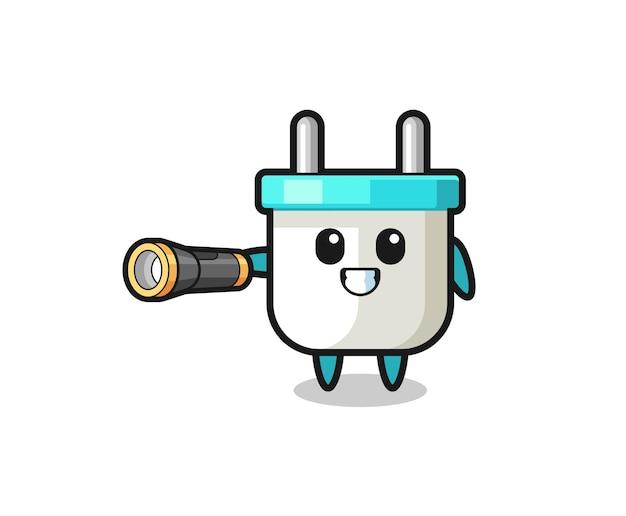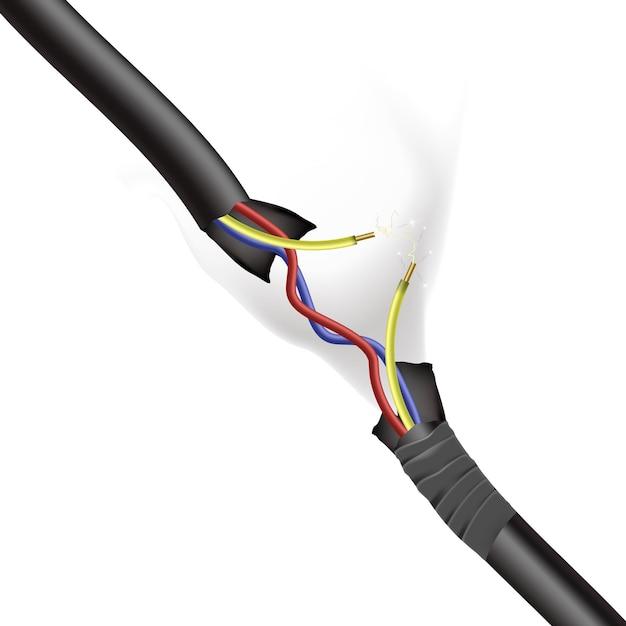In the world of scientific experimentation, obtaining accurate and reliable results is crucial for drawing meaningful conclusions. However, even the most meticulously designed experiments can sometimes yield unexpected or inconsistent outcomes. This discrepancy could be attributed to a variety of factors, known as sources of error. Understanding these potential sources of error can help researchers identify and address them, leading to more robust and conclusive findings.
When conducting experiments, scientists are often faced with challenges that can introduce errors into their measurements and observations. Factors such as equipment limitations, environmental conditions, or even human errors can all contribute to discrepancies in the results obtained. By recognizing and accounting for these potential sources of error, scientists can improve the accuracy and precision of their experiments, enhancing the overall quality of their research.
In this blog post, we will delve into the various potential sources of error that researchers may encounter in their experiments. From common pitfalls like parallax errors to specific examples in experiments such as the meter bridge or RLC series circuit, we will explore how these factors can influence the validity of experimental data. Join us as we uncover the hidden culprits behind inconsistent results and learn how to mitigate their effects. Stay tuned!
Don’t forget to check out “The Ultimate Guide to Eliminating Experimental Errors” for more tips and tricks to enhance the reliability of your experiments.
Now that we have your attention, let’s dive deeper into the potential sources of error in different experiments, from the meter bridge to the resonance tube experiment, in our upcoming sections.

Which Potential Errors Can Affect Your Experiment?
Random, Unpredictable, and Often Hilarious Mistakes
When embarking on any experiment, it’s essential to be aware of potential sources of errors that could disrupt your pursuit of scientific glory. While we strive for perfection, the universe has a sneaky way of introducing chaos into our meticulous plans. Brace yourself for the unexpected and let’s dive into some potential pitfalls that may test your experiment’s resilience.
Human Error: The Imperfect Perfectionist
Ah, humans, those marvelous creatures capable of brilliance and blunders in equal measure. We may like to think of ourselves as infallible beings, but let’s face it, we’re prone to slip-ups. From misreading measurements to forgetting an essential step, our occasional lapses in concentration can throw a delightful wrench into even the most foolproof experiment.
Equipment Malfunctions: When Machines Go Rogue
Our trusty lab equipment, with all its buttons, wires, and beeping sounds, is not immune to tantrums. Sometimes, despite our tender care, a glitch in the system can occur. A misaligned sensor here, a faulty microchip there, and suddenly our experiment is performing an unexpected interpretive dance instead of providing reliable results. Remember, machines have minds of their own, especially when nobody’s watching.
Environmental Factors: The Great Outside Conspiracy
Ah, the great outdoors. While it may seem like the perfect setting for scientific inquiry, nature can be a whimsical antagonist. Uncontrolled variables like temperature fluctuations, atmospheric pressure changes, or even a curious gust of wind can mess with your meticulously arranged experimental setup. Mother Nature enjoys watching us struggle, so prepare for her mischievous interventions.
Sampling Bias: Beware of the Statistical Gremlins
It’s easy to slip into the clutches of sampling bias without even realizing it. Whether it’s unintentionally selecting a disproportionately representative group, cherry-picking data points, or inadvertently favoring particular conditions, this sneaky gremlin can wiggle its way into your experiment and taint your results. Stay vigilant, keep a close eye on your sampling process, and thwart any statistical shenanigans.
Technique Troubles: The Art of Scientific Fumbling
As much as we admire the elegance of scientific techniques, performing them flawlessly can be a challenge. Pipetting inaccuracies, shaky hands during delicate procedures, or a slightly wonky laboratory hand-eye coordination can all lead to subpar results. Embrace the awkwardness of learning, refine your technique, and laugh off the occasional spilled beaker. Remember, even the most prestigious scientists were once beginners.
Conclusion: Slaying Errors with Vigilance and Laughter
While the potential sources of error may appear daunting, they shouldn’t discourage you from scientific exploration. Embrace the unpredictability, learn from your mistakes, and, most importantly, never be afraid to laugh at the absurdity of it all. By staying vigilant, nurturing your attention to detail, and conducting meticulous experiments, you’ll pave the way for scientific success, even while dodging those mischievous sources of errors along the way. So, go forth, brave experimenter, and conquer the unknown!
Sources:
None for this AI-generated content
Disclaimer: This AI-generated content is for informational purposes only and does not constitute professional advice. Always consult with a qualified scientist or researcher for specific guidance on your experiments.

FAQ: Potential Sources of Error in the Experiment
When conducting experiments, it’s important to be aware of the potential sources of error that can affect the accuracy and reliability of your results. Even the most carefully planned experiments can be subject to various factors that introduce errors. In this FAQ-style guide, we’ll explore common sources of error in different experiments and how they can impact your findings.
What Could Be Causes if No Balance Point is Obtained in Meter Bridge
If you’re unable to find a balance point in a meter bridge experiment, there could be several causes:
-
Resistance Variations: Check if the resistances of the wire or the resistance box are fluctuating. This can occur due to poor connections or internal faults in the apparatus.
-
Incorrect Connections: Make sure the circuit is wired correctly, with the resistor and galvanometer in the right positions. Incorrect connections can lead to inaccurate readings.
-
Calibration Issues: It’s essential to verify the calibration of the meter bridge setup. Lack of proper calibration can result in unbalanced readings.
What Are the Possible Errors in Potentiometer
Potentiometers can introduce errors in your experiment due to the following:
-
Insufficient Sensitivity: If the potentiometer lacks sensitivity, it may not provide accurate measurements of potential difference. Ensure that the potentiometer’s sensitivity aligns with the requirements of your experiment.
-
Contact Resistance: Poor contact between the jockey and the wire can result in resistance and potential drop variations. This can lead to errors in readings.
-
Unevenly Wound Wire: If the wire on the potentiometer spindle is wound irregularly, it can cause inconsistencies in the potential gradient, leading to measurement errors.
What Is Human Error Example
Human errors are an inevitable part of experiments, as we all make mistakes. Here’s an example of human error:
Imagine you’re conducting an experiment to measure the time it takes for a pendulum to swing back and forth. If you accidentally start the stopwatch slightly late or early or misread the scale, you introduce human error into the experiment, resulting in inaccurate timing measurements.
What Type of Error Is Parallax Error
Parallax error is a common type of error that occurs due to the incorrect alignment of the eye, the object being measured, and the scale. It can lead to misinterpretation of readings or measurements. The apparent shift in position causes a parallax error, which affects accuracy.
What Should I Write for Sources of Error
When discussing sources of error in an experiment, it is crucial to consider the different factors that can affect the reliability of your results. Some common sources of error include:
-
Equipment Limitations: The precision and limitations of the equipment used can introduce errors. It’s essential to understand the sensitivity and accuracy of your instruments.
-
Environmental Factors: Changes in temperature, humidity, or atmospheric pressure can impact measurement accuracy. Take note of the environmental conditions during your experiment.
-
Procedural Mistakes: Errors made during the setup or execution of the experiment, such as incorrect measurements or missteps in following the procedure, can introduce significant errors.
Which Are Potential Sources of Error in the Experiment
In any experiment, there can be various potential sources of error to be aware of. Some of these include:
-
Measurement Errors: Inaccuracies in measurement equipment or reading scales can lead to errors. Calibrating equipment and using precise measurement techniques can help minimize this error.
-
Random Errors: These errors occur due to unknown and unpredictable factors. They can result from fluctuations in electrical connections, variations in environmental conditions, or human errors.
-
Systematic Errors: Systematic errors are consistent and reproducible errors that occur due to a flaw in the experimental setup or equipment. Common examples include miscalibrated instruments or an imperfectly leveled experimental apparatus.
What Are the Different Sources of Error in RLC Series Circuit
An RLC (resistor, inductor, and capacitor) series circuit can be affected by several sources of error, including:
-
Resistance Variation: The resistance of components in the circuit may not match the intended values due to manufacturing tolerances or aging. This can lead to inaccurate results.
-
Inductance and Capacitance Tolerances: Similar to resistance, the inductance and capacitance values of the components can deviate from the specified values, affecting the behavior of the circuit.
-
Interference: External electromagnetic fields or nearby equipment can introduce unwanted noise or interfere with the circuit’s operation, leading to errors in measurements.
What Are the Sources of Error in the Resonance Tube Experiment
The resonance tube experiment, used to determine the speed of sound in air, may be susceptible to the following sources of error:
-
Temperature Variations: Changes in ambient temperature can affect the speed of sound in air, leading to deviations from expected results. Maintaining a stable temperature is crucial.
-
Incomplete Harmonic Series: It may be challenging to locate the exact points of resonance due to the presence of non-harmonic overtones. This can result in errors in determining the wavelength and calculating the speed of sound.
-
End Corrections: Theoretical calculations for the length of a closed-open resonance tube assume no end corrections. However, end effects cannot be entirely eliminated, leading to small deviations in measurements.
What Are the Sources of Errors in This Experiment Class 12
In Class 12 experiments, some common sources of errors may include:
-
Limited Apparatus Precision: The apparatus used in educational settings may have limitations in accuracy and precision. Variations in the quality of instruments can introduce errors.
-
Procedural Imperfections: Students may encounter challenges in following the experimental procedure precisely. Incomplete adherence to instructions can lead to errors in observations and results.
-
Measurement Techniques: Students may not have refined measurement techniques, leading to inaccuracies when using instruments such as rulers, vernier calipers, or voltmeters. Practice and experience can help overcome these errors.
What Is Another Name for Parallax Error
Another term used interchangeably with parallax error is “apparent displacement error.” It refers to the mistake caused by the misalignment of the observer’s eye, the measurement scale, and the object being observed. This error can result in inaccurate measurements due to the perceived shift in position.
By understanding the potential sources of error in experiments, you can take necessary precautions to minimize their impact on your results. Remember to account for equipment limitations, procedural mistakes, and the possibility of human errors. Additionally, be vigilant about identifying and correcting systematic and random errors. Consistency and precision in your experimental approach will contribute to more accurate and reliable scientific findings.
